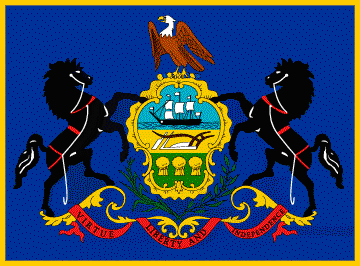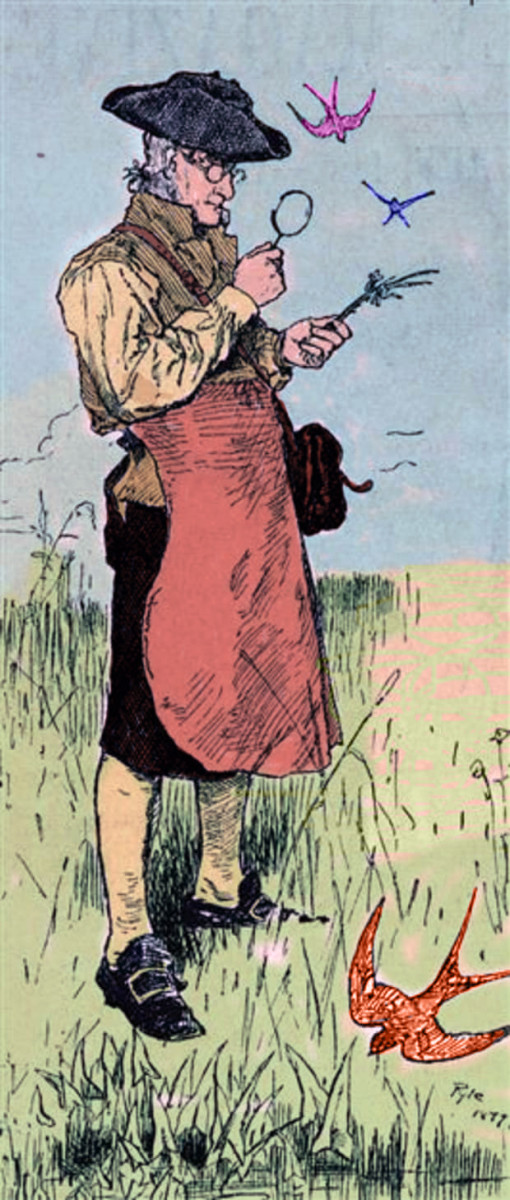William Penn Family Coat of Arms - Pennsylvania State Flag
12 Years Later
December 12, 1787, Pennsylvania was the second state to be admitted into the United States of America. It was twelve years later in 1799 that the General Assembly of Pennsylvania authorized the official state flag. On June 13, 1907, the General Assembly standardized the flag requiring that the blue background of the flag match the blue that is found in the United States flag. In 2007, the Pennsylvania House of Representatives voted to add “Pennsylvania” to the bottom of the flag in gold letters.

William Penn Coat of Arms Used on Flag
Unlike most flags, Pennsylvania’s flag is closer to being square than rectangle. The flag, which is trimmed in knotted fringe of yellow silk, has a blue background. It is on this background that the official State Coat of Arms is embroidered. This Coat of Arms is the official seal of the William Penn family. The Coat of Arms includes a ship representing commerce, a plow representing the state’s agricultural and natural resources, and three sheaves of wheat representing fertility and success.
Black draft horses symmetrically face the Coat of Arms on each side, appearing to support it. The majestic American eagle, representing Pennsylvania’s loyalty to the United States, is perched on top of the Coat of Arms.
Flanking the lower part of the Coat of Arms is a stalk of Indian corn on the left and an olive branch on the right, in recognition of the state’s past and its hope for the future. It has also been suggested that they represent success and peace.
A red ribbon, containing the state motto, “Virtue, Liberty, and Independence”, is beautifully draped across the design at the bottom.

Civil War Flag
During the Civil War, many Pennsylvanian regiments carried a modified version of the United States flag. Where you would normally see the blue background with the stars, contained the same blue background with the Penn family Coat of Arms.
All Rights Reserved
Copyright © 2012 Cindy Murdoch (homesteadbound)

Your Future is Waiting! Do you feel you have great information or stories to share with others? Sign Up Here. . . It’s quick, easy and free to join HubPages!









